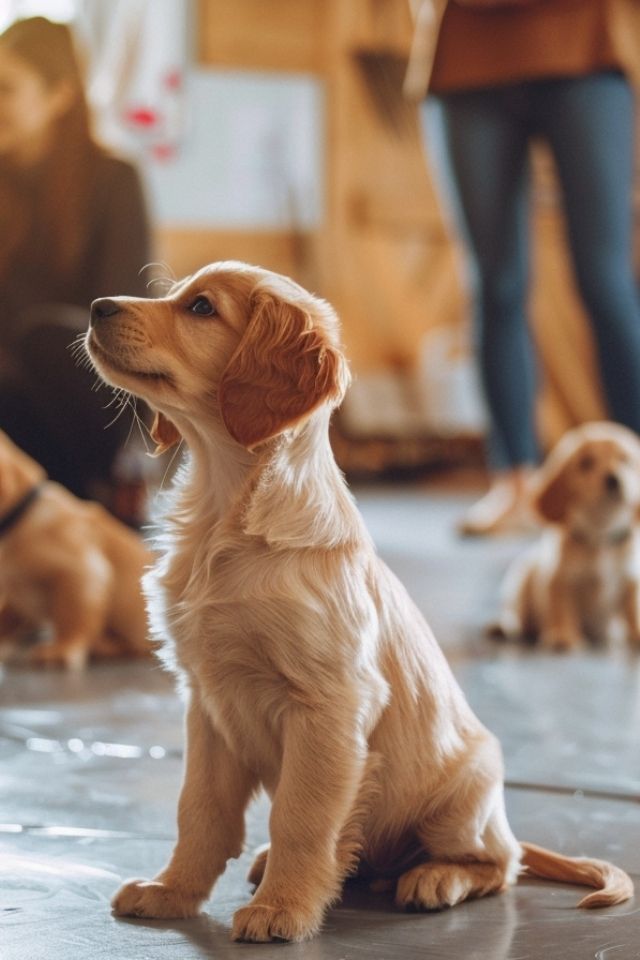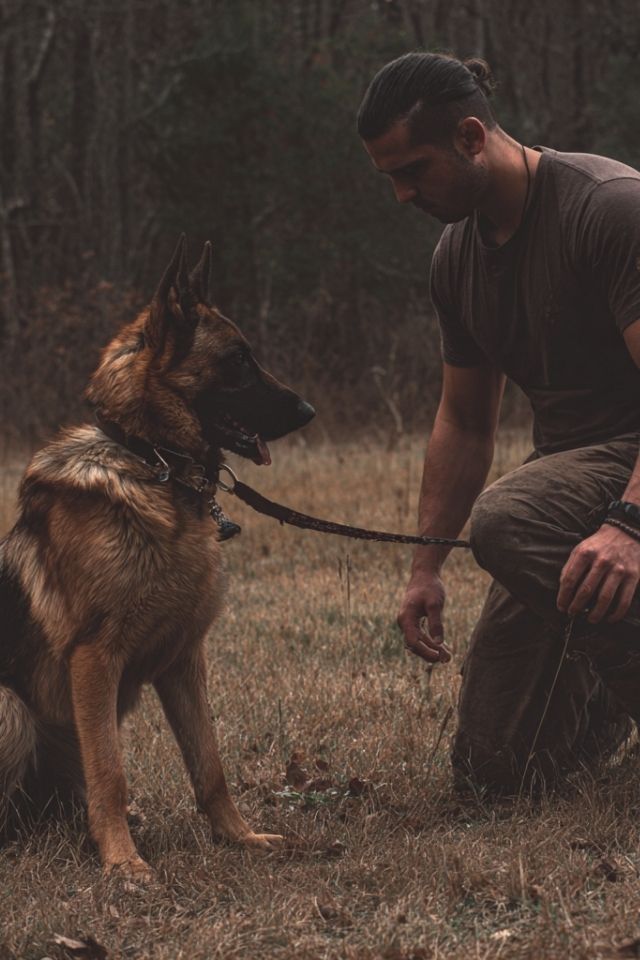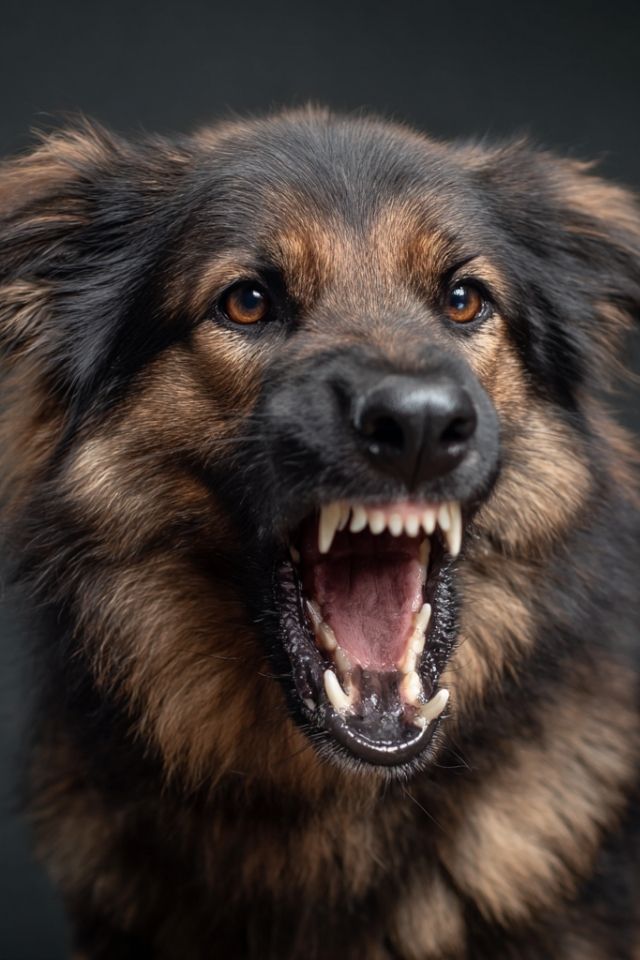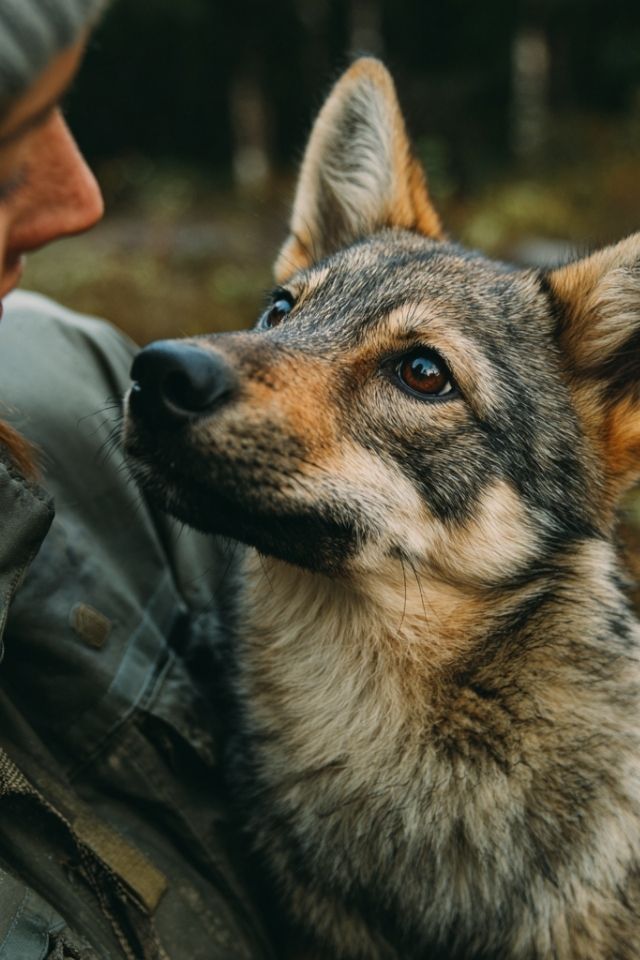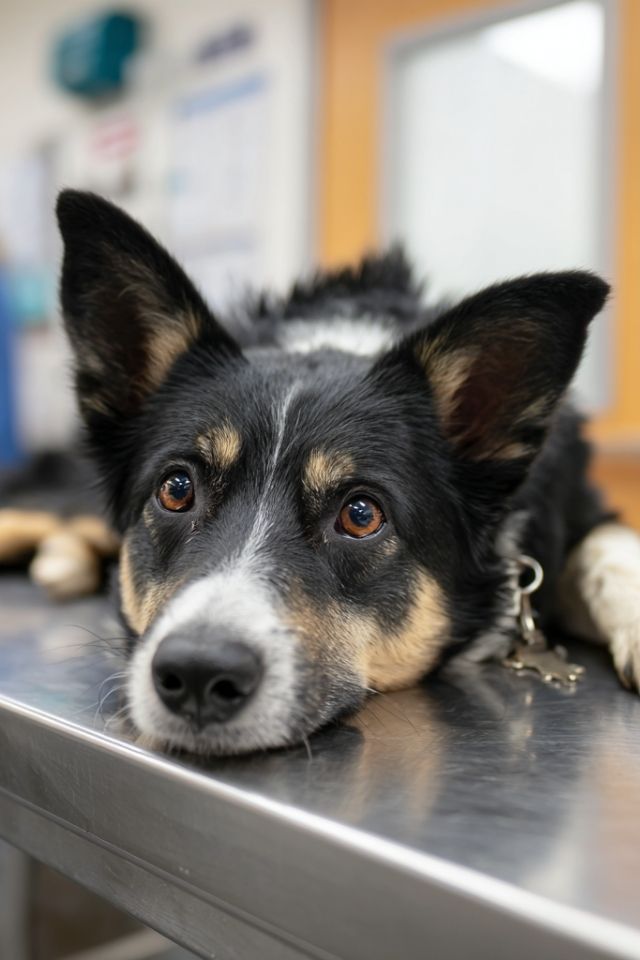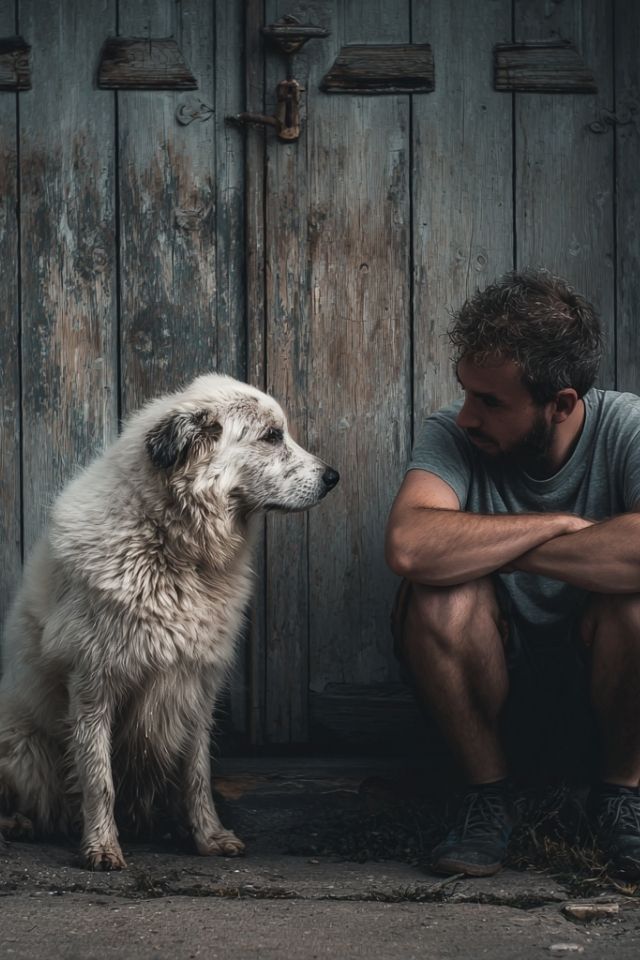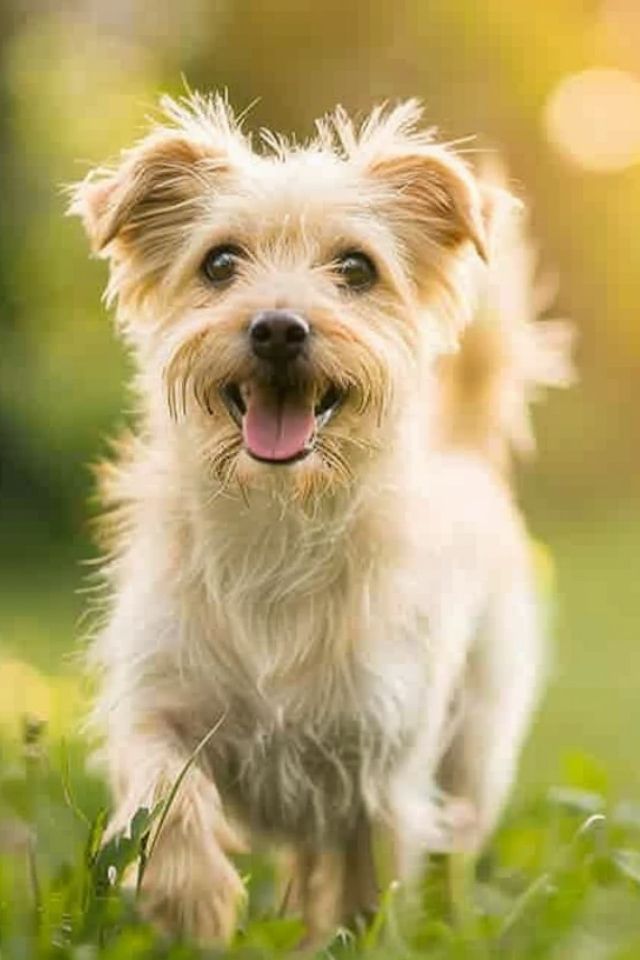There’s a moment—perhaps you’ve felt it—when your hand reaches for the leash and time seems to suspend. Your dog’s body becomes electric, muscles coiled like a spring storm, eyes bright with knowing. They’ve read the story of your movements a thousand times before. The jingle of keys means departure. The rustle of that particular jacket means adventure. They know the ending before you’ve written the beginning.
This is the dance of anticipation, as old as the first wolf who learned to read human intentions by the firelight.
The Mind That Reads Tomorrow
Picture a Border Collie named Luna, watching her human Sarah prepare breakfast. Luna’s brain isn’t simply waiting—it’s conducting a symphony of predictions. Each movement Sarah makes sends ripples through neural pathways that have been carved by repetition, like water finding its way through stone. The opening of the cabinet (that’s where the bowls live), the sound of kibble against metal (breakfast is coming), the way Sarah’s shoulders shift before she turns (now, surely now).
In Luna’s mind, the prefrontal cortex—that wise counselor of impulse—wrestles with the amygdala’s emotional fire. Dopamine surges like morning sun, creating what scientists call an “impulse vector,” though Luna knows it simply as the irresistible pull toward what she desires. Meanwhile, serotonin tries to gentle the storm, whispering wait, wait, not yet.
This internal struggle isn’t defiance. It’s the magnificent burden of a mind that has learned to read the future in the present moment.
The Language of Almost
Watch closely when anticipation builds in your companion. It begins as a whisper—ears rotating forward like satellite dishes catching distant signals. The weight shifts, almost imperceptibly, onto the front paws. The tail, that honest storyteller, begins its slow metronome before accelerating into wild celebration of what hasn’t happened yet.
I once knew a Golden Retriever named Max whose anticipation was pure poetry. When his human reached for running shoes, Max’s body would tell the entire story of their upcoming adventure. First, the freeze—absolute stillness except for rapidly dilating pupils. Then the tremor, starting in his haunches and traveling forward like an earthquake’s first warning. Finally, if the waiting became unbearable, a soft whine would escape—not demanding, but conversational, as if to say, I know what comes next, and the knowing is almost too much to bear.
This cascade from composure to overflow isn’t misbehavior. It’s a nervous system flooded with cortisol and adrenaline, transforming patient waiting into an impossible task. Imagine trying to meditate while standing at the edge of a cliff—that’s your dog’s reality when overwhelmed by anticipatory arousal.
The Architecture of Patience
Building patience begins with understanding that “wait” and “stay” aren’t mere commands—they’re invitations to a different state of being. Each successful pause literally reshapes your dog’s brain, decreasing the excitability of prelimbic neurons, carving new pathways where impulsivity once ruled.
Start with heartbeats, not minutes. Ask for a single breath of waiting before the food bowl touches ground. One second of stillness before the door opens to the yard. These micro-moments aren’t small at all—they’re seeds of transformation. Sarah discovered this with Luna. Rather than demanding lengthy stays, she began requesting tiny pauses throughout their daily dance. Wait for eye contact before throwing the ball. Pause before permission to greet a friend. Each success strengthened those inhibitory neural pathways like a climber building strength one handhold at a time.
The secret weapon isn’t consistency—it’s beautiful unpredictability. Sometimes the wait lasts three seconds, sometimes thirty. Sometimes it ends with treats, sometimes with play, sometimes with simply moving forward together. This variability transforms waiting from endurance into engagement. Your dog learns that patience itself holds value, not merely as an obstacle to overcome.
The Invisible Leash of Connection
Beyond traditional training lies something deeper—what we call the Invisible Leash. It’s the connection so profound that a slight change in your breathing communicates “not yet” as clearly as any word. This isn’t built through commands but through a practice of synchronized existence.
Sit with your dog in stillness. Breathe slowly, consciously, until you feel their rhythm match yours. This is where the NeuroBond strengthens—in the quiet spaces between heartbeats. From this foundation of co-regulation, introduce gentle challenges. A distant sound. A toy placed nearby but untouched. You’re not teaching your dog to suppress their desires but to find peace in the space between wanting and having.
An elderly woman named Margaret discovered this with her anxious Cavalier King Charles Spaniel, Duchess. Traditional training had failed because Duchess’s anticipation was rooted in anxiety, not excitement. But when Margaret began their days with five minutes of synchronized breathing, something shifted. Duchess learned that stillness wasn’t abandonment but connection. The Invisible Leash became their shared language.
When Breed Whispers Its Ancient Story
Every breed carries its ancestral wisdom in their DNA, shaping how anticipation manifests. The Border Collie’s anticipation springs from centuries of reading the shepherd’s smallest gesture across highland meadows. The Husky’s independence means they weigh each moment of waiting against their own internal compass. The tender-hearted Cavalier trembles not from cold but from the emotional weight of uncertainty.
Understanding your dog’s genetic story helps you honor their struggle with patience. That Pointer freezing mid-step isn’t being stubborn—she’s expressing generations of selective breeding for sustained anticipation before the flush. Work with these inherited patterns, not against them. Frame waiting as purposeful work for the working breeds, valuable negotiation for the independent spirits, and emotional safety for the sensitive souls.
The Sacred Pause in Daily Life
Transform routine moments into opportunities for the sacred pause. Meal preparation becomes a meditation on patience. The doorway transforms into a threshold of choice—chaos or calm. Create patience stations throughout your home, physical spaces that whisper “here, we wait.” A mat by the door where excitement transforms into readiness. A bed in the kitchen where anticipation mellows into peaceful presence.
In multi-dog households, patience becomes contagious when practiced with intention. Teach the art of taking turns—one holds the mountain stillness of a down-stay while another dances through tricks, then reverse. They learn that another’s movement doesn’t demand their participation, that waiting has its own rewards.
The Biochemistry of Calm
The food we offer shapes more than muscle and bone—it influences the very neurotransmitters that govern patience. Omega-3 fatty acids strengthen neural membranes, allowing clearer communication between patience and impulse. B-vitamins become the building blocks of serotonin, that gentle guardian of calm.
Consider transforming mealtime from gulp to contemplation. Puzzle feeders and snuffle mats turn anticipatory energy into focused problem-solving. Each piece of kibble discovered through patient searching releases dopamine in measured doses rather than floods. The anticipation remains but channels into purposeful action.
When Anticipation Becomes Shadow
Sometimes anticipation darkens into something deeper—chronic anxiety that makes every moment feel like waiting for thunder. These dogs need more than training; they need healing. Watch for the signs: inability to settle even in familiar silence, anticipation that worsens despite patient practice, the trembling that speaks of fear rather than excitement.
This is when patience training becomes therapeutic rather than educational. Micro-moments of success in safe spaces. Perhaps L-theanine or chamomile supporting the nervous system’s journey toward regulation. Always, always, the understanding that some dogs need professional guidance to find their way from constant vigilance to peaceful presence.
The Journey Home
Teaching patience is ultimately about trust—trusting that good things come to those who wait, that stillness holds its own rewards, that the space between desire and fulfillment can be sacred rather than frustrating. Each patient moment you cultivate with your dog strengthens the Invisible Leash that connects your souls.
Start tonight. When you reach for the leash, pause. Feel that electric moment of anticipation. Breathe together in that space between intention and action. Make it last just one heartbeat longer than comfortable. Then celebrate—not just the walk that follows, but the waiting itself.
Your dog’s anticipation isn’t a flaw to fix but an energy to channel. Those trembling muscles, that barely-contained excitement, that whine of overwhelming knowledge—these are invitations to practice the art of the pause together. In teaching patience, we learn it ourselves. In asking our dogs to wait, we discover the beauty of stillness.
The journey from anticipation to patience is really a path toward mutual understanding, where every pause becomes a prayer, every wait a meditation on trust, and every moment of stillness a celebration of the sacred bond between human and dog.
